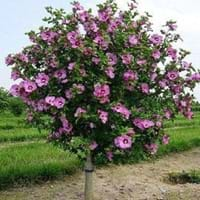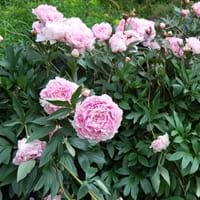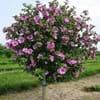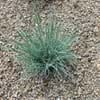Rose of Sharon Hibiscus and Chinese Peony Care
Watering Rose of Sharon Hibiscus and Chinese Peony
Water is the most essential need of any plant. Watering requirements differ for every plant. Knowing the amount of water required is the most important part of Rose of Sharon Hibiscus and Chinese Peony Facts. One needs to adequately water the plants keeping in mind that plants need season wise variations in water levels. While taking Rose of Sharon Hibiscus and Chinese Peony care, it is important to know that too much water is more dangerous than not enough watering. Here we provide you with the exact watering required for your garden plant. Watering Rose of Sharon Hibiscus and Chinese Peony is as follows:
Watering Rose of Sharon Hibiscus in Summer: Lots of watering
Watering Rose of Sharon Hibiscus in Winter: Average Water
Watering Chinese Peony in Summer: Lots of watering
Watering Chinese Peony in Winter: Average Water
Rose of Sharon Hibiscus and Chinese Peony Diseases
Plants get infected many times due to lack of care. This makes it unhealthy and reduces its life too. Hence it is necessary to know the kind of disease on plants, to cure it and keep the plant healthy. Knowing About Rose of Sharon Hibiscus and Chinese Peony diseases is very important factor of Rose of Sharon Hibiscus and Chinese Peony Care. These plant's diseases are:
- Rose of Sharon Hibiscus: Aphids, Mealybugs, Red spider mite, Scale, Thripes and Whiteflies
- Chinese Peony: Botrytis Blight, Leaf spot, Stem spot and Viruses
Rose of Sharon Hibiscus and Chinese Peony Pruning
Pruning is an important part of Rose of Sharon Hibiscus and Chinese Peony care. Pruning helps to grow the plant with a faster rate. Rose of Sharon Hibiscus and Chinese Peony pruning is done as follows:
Rose of Sharon Hibiscus pruning: A hard prune may be necessary if the plant becomes woody, Cut leaves after fall, Cut or pinch the stems, Pinch or prune as they grow to promote branching and bushiness, Prune for shortening long shoots, Prune in early summer and Remove deadheads
Chinese Peony pruning: Do not prune during shooting season, Prune to control growth, Remove dead or diseased plant parts and Remove deadheads
Plants need fertilizers for its growth and increasing the life. Rose of Sharon Hibiscus and Chinese Peony fertilizers are as follows:
- Rose of Sharon Hibiscus fertilizers: Apply 10-10-10 amount, Balanced liquid fertilizer, Do not fertilize new plants until at least a month and Use a low phosphate fertilizer to improve the quality of the blooms
- Chinese Peony fertilizers: All-Purpose Liquid Fertilizer
|
||
|
||
|





